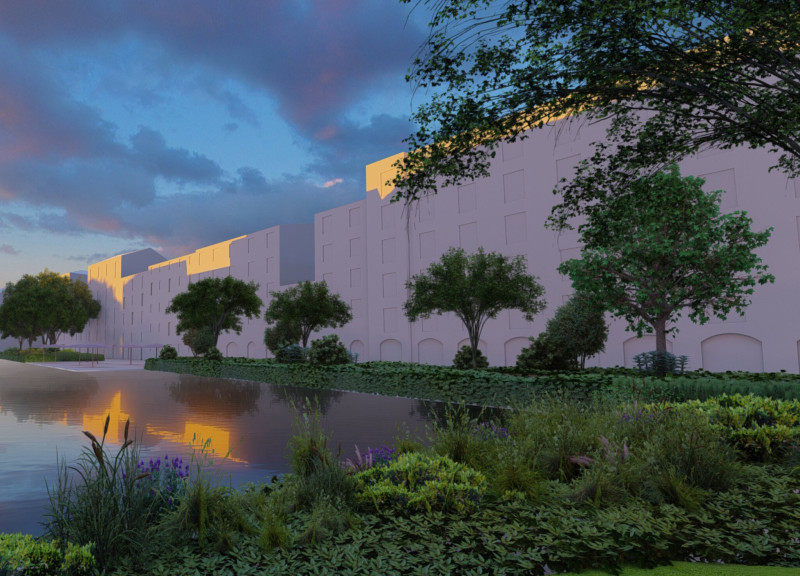5 key facts about this project
The Porto Vecchio di San Marco project explores the revitalization of the Navigli canals in Milan, focusing on reconnecting the city with its historical waterways. This approach seeks to enhance urban life through improved water management and the establishment of vibrant public spaces. By addressing important environmental issues, the concept aims to create a sustainable urban environment while promoting community interaction.
Water Management and Ecology
At the heart of the design is the goal to separate clean rainwater from the sewage system. This strategy is essential for protecting the Olona and Ticino rivers from pollution caused by heavy rainfall. By managing water effectively, the project envisions a healthier ecosystem while contributing to Milan's efforts in sustainability. Every drop of rain is treated with care, ensuring that the natural water systems remain pure and vital.
Green Infrastructure
The inclusion of green infrastructure is crucial in this project. Filter plants are incorporated into the design to enhance water quality and support biodiversity. These elements create an ecological buffer that not only improves environmental conditions but also invites people to engage with nature. Lush greenery throughout the area offers places for relaxation, while also serving practical purposes in maintaining the ecosystem.
Public Spaces and Social Interaction
An important feature is the promenade that runs along the canal, designed to improve pedestrian access. This open space encourages social activities, such as markets and gatherings. People can enjoy leisure time and connect with one another. The revitalized waterfront becomes a lively area, where history meets modern urban life. It serves as a reminder of the city’s trading past and enriches the collective experience of its residents.
Pavilion and Gatherings
At the southern end of the basin, a pavilion will act as a gathering point for the community. This structure is designed for various activities, including events and nature observation. Positioned thoughtfully, it draws people towards the water, creating a place of interaction. The pavilion highlights the commitment to integrating natural elements into the urban setting, inviting everyone to engage with the environment around them.






















































